UX Design & Development:
Migreat
The online platform dedicated to simplifying the immigration process, offering legal advice, personalised guidance and resources to help migrants seamlessly integrate into their new communities.
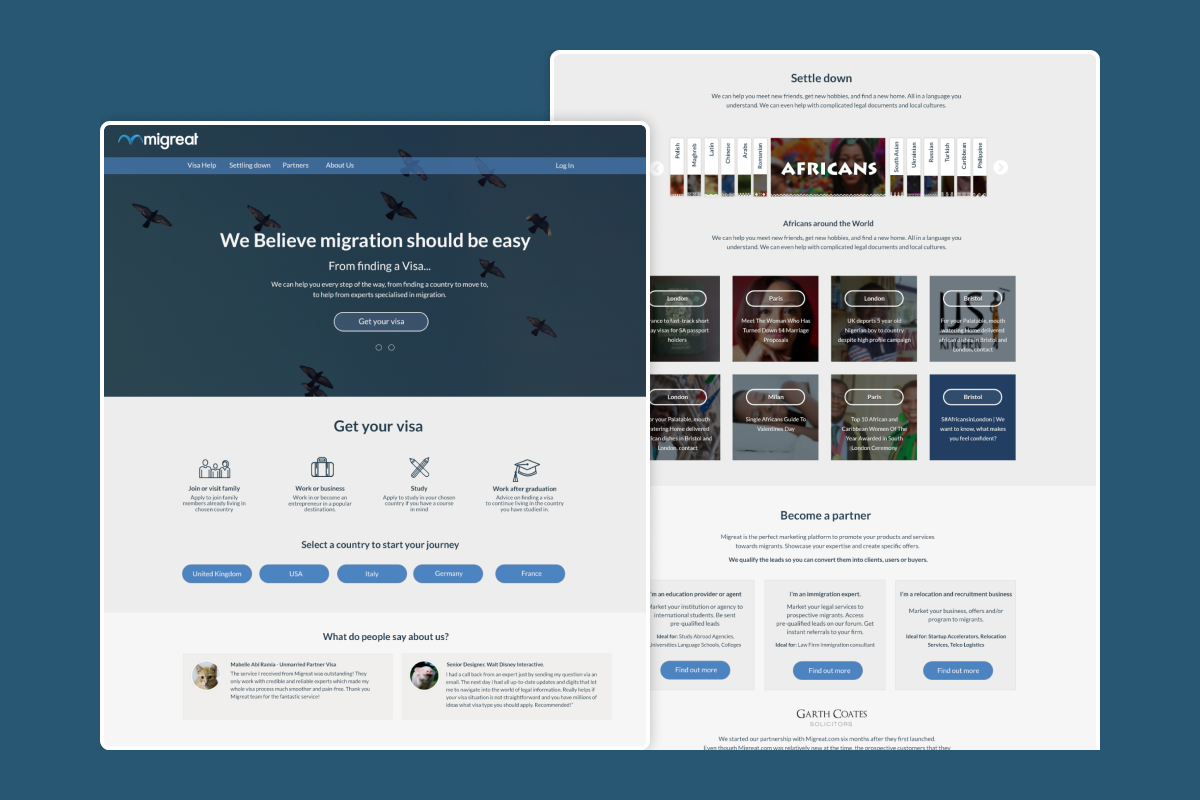
As Migreat’s UX Engineer, I worked on every step of the design and development process, from brainstorming on the whiteboard to creating wireframes in Balsamiq and building prototypes with HTML5 and SCSS. My role focused on designing and implementing user-friendly interfaces, conducting user research, and collaborating with the team to improve the platform’s user experience.
Migreat
formely Sharehoods
Tools
Skills
UX Design · Responsive Web Design · Visual Design · Cross-functional Collaboration · Research & Testing
problem statement
Over one billion people are estimated to migrate in the next five years, navigating expensive and complex immigration processes. Immigration is a sensitive topic, especially in countries experiencing high influxes of newcomers. Political pressure often mounts to control immigration and protect resources.
However, migrants who successfully integrate into their receiving societies can make valuable contributions—boosting the local economy, filling critical skill shortages, and driving technological progress.
project goals
Simplify the immigration process by breaking down complex rules into clear, actionable steps.
Provide personalised guidance tailored to individual needs, such as education, family reunification, and job opportunities.
Foster long-term integration by connecting migrants with local resources, job opportunities, and community networks.
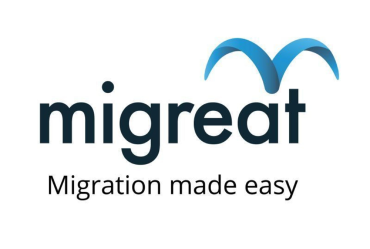
research & testing
Through user testing and feedback, we identified pain points in the existing migration processes, guiding us to enhance usability and create a more intuitive digital experience.
research methods
The design of the Migreat platform was informed by user interviews, surveys, and usability testing, which helped us understand migrants' challenges and refine functionality.
A competitive analysis identified gaps in existing tools, while workshops with legal experts and community organisations ensured the platform aligned with legal requirements and provided reliable, relevant support.
user needs
What challenges do migrants face when navigating the immigration process?
How do migrants access information about immigration requirements, and what are their experiences with these sources?
What personalised support do migrants need to manage their immigration journey confidently?
What inadequacies do users perceive in current migration tools and services, and what features would they find most beneficial in a new platform?
Clear and Reliable Information: Users need accurate, up-to-date information on immigration policies and procedures.
Personalised Support: Tailored advice based on specific scenarios, such as family reunification or skill-based employment pathways.
Simplified Processes: Easy-to-follow steps that reduce the complexity of navigating legal and bureaucratic systems.
Community Resources: Access to local support services, language learning programs, and integration opportunities.
Trustworthy Guidance: Assurance that the platform provides legitimate and verified legal advice to avoid potential pitfalls.
visuals
Based on the research findings we made the decision to develop three distinct products — the Visa Finder Wizard, the Communities Platform, and the Blog.
Each product focuses on a specific aspect of the migration experience and this separation enhances user experience by allowing for tailored functionalities, making it easier for users to find what they need. Additionally, it enabled us to respond quickly to user feedback and updates without disrupting other features, ensuring each product evolves based on specific insights.
visa finder wizard
The Visa Finder Wizard emerged from insights about users’ struggles with understanding complex immigration processes.
It was designed to provide an intuitive, step-by-step interface that simplifies the visa application process, allowing users to input their information and receive tailored recommendations based on their specific circumstances. An algorithm generates a customised to-do list for each user, providing accurate, up-to-date information tailored to their specific situation.

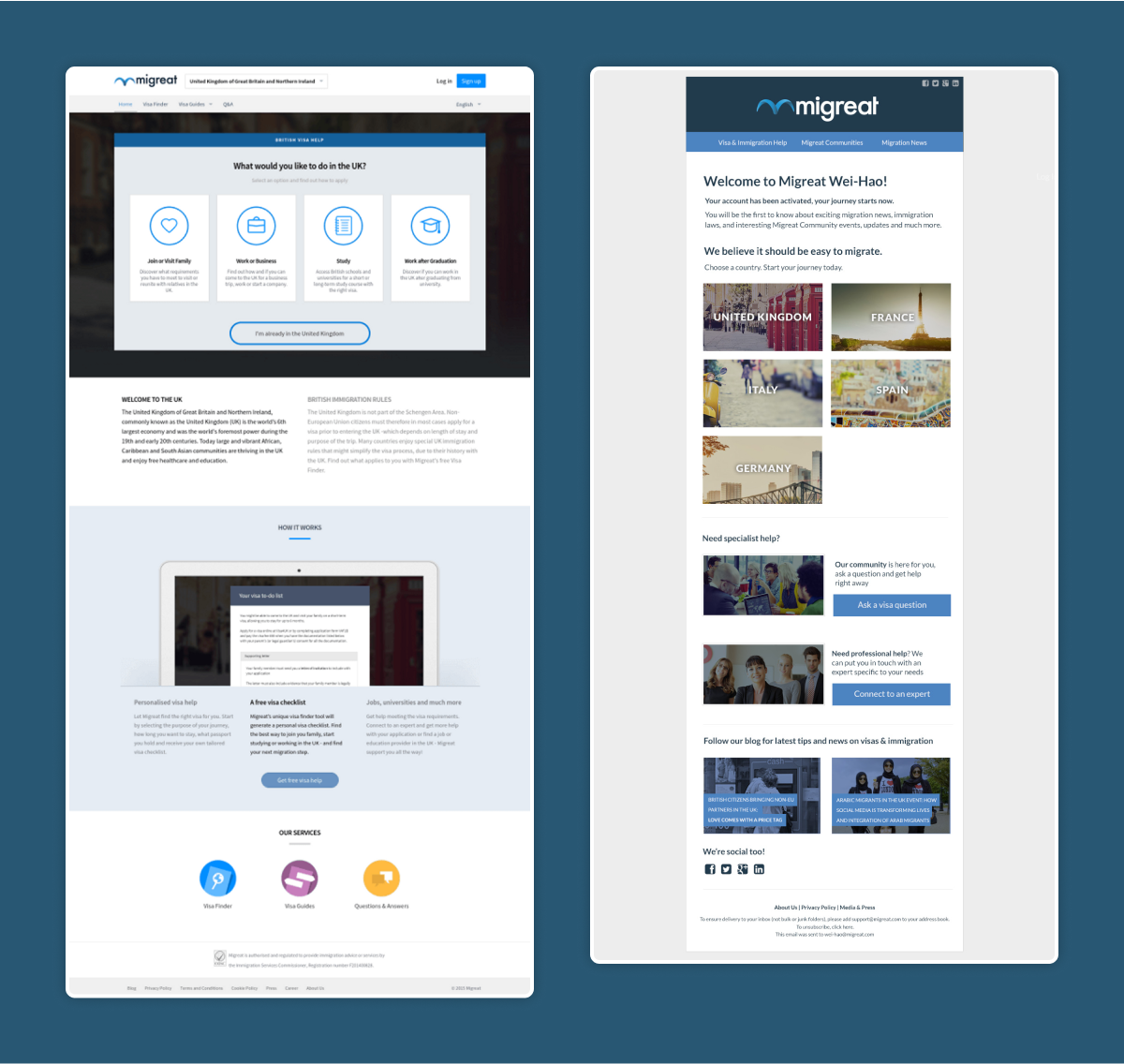
communities website
The Communities website was developed to address users’ needs for support and connection within their new communities.
The research highlighted the importance of local resources and networks, so this platform offers a space for migrants to find and connect with community services, support groups, and other migrants, fostering a sense of belonging and integration.
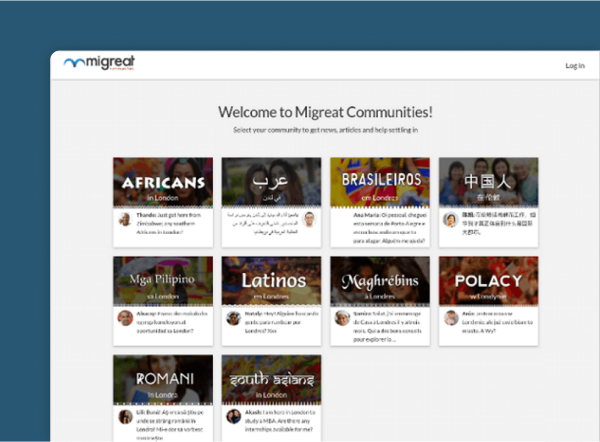
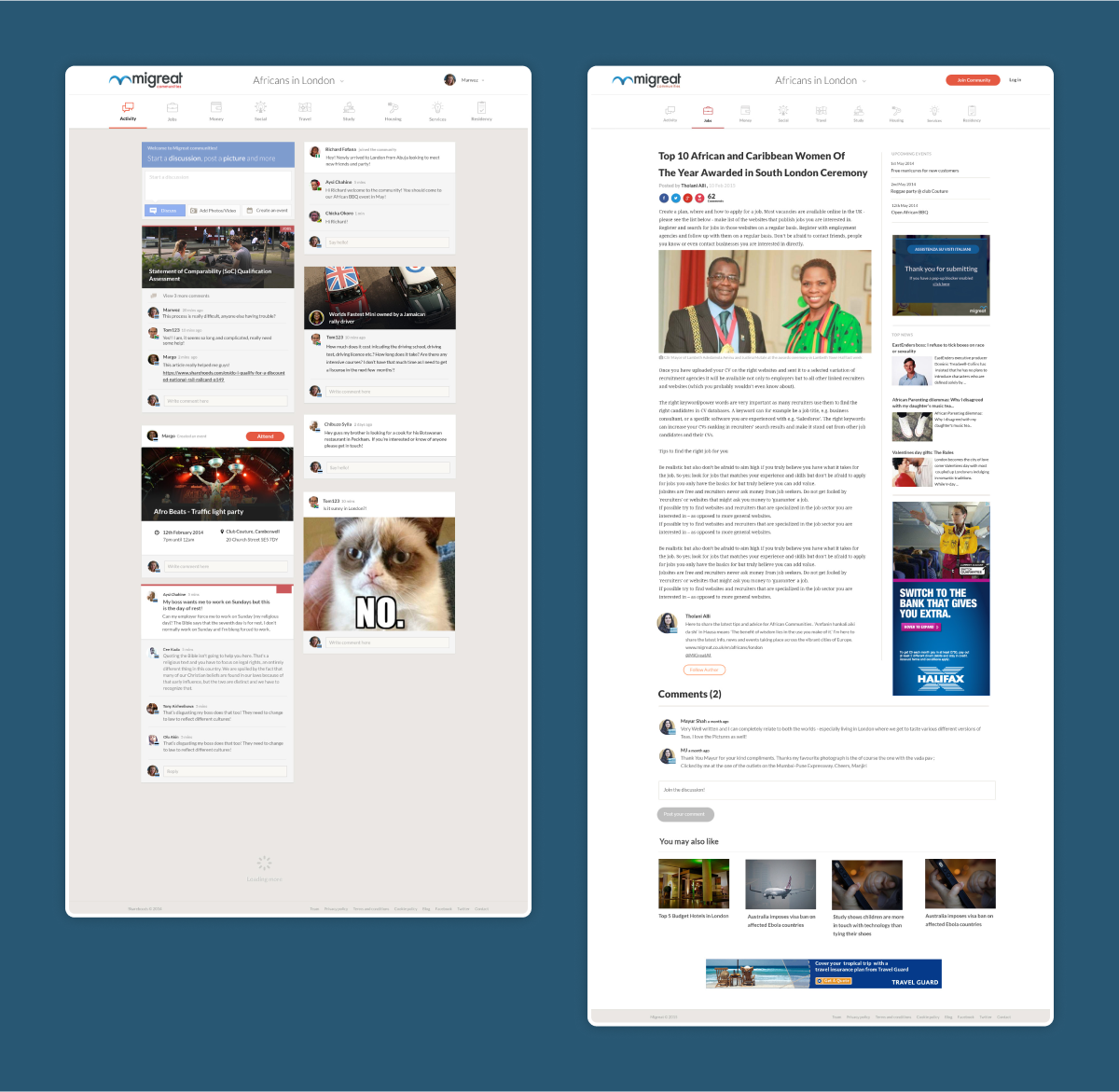
the migreat blog
Finally, users voiced a desire for reliable information on various aspects of migration and settling into a new country. The Blog provides clear, informative content on topics such as navigating immigration, understanding local culture, and job searching tips, empowering users with the knowledge they need to thrive in their new environment.
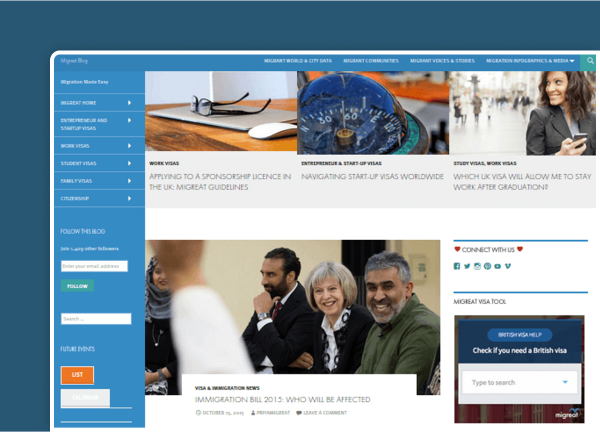
results & next steps
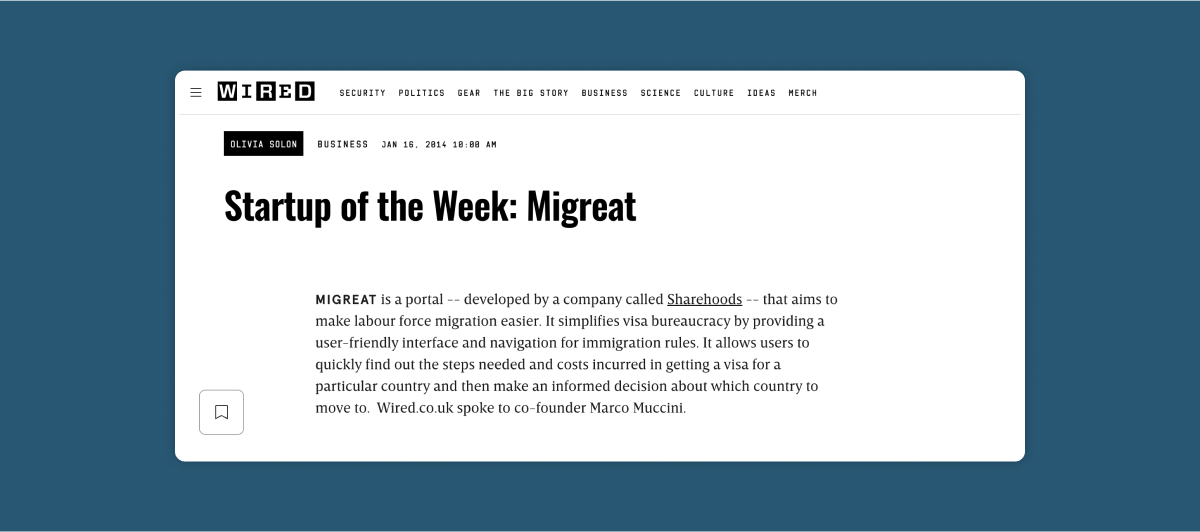
Migreat has transformed the visa application process for users, making it smoother and more user-friendly. Feedback so far has shown that its intuitive design and personalised features simplify the complexities of immigration. Users report feeling more confident managing visa requirements, particularly with custom to-do lists and easy access to reliable information.
Overall, Migreat succeeded in empowering migrants to make informed choices about their new homes while connecting them with vital resources.
Looking ahead, we will focus on enhancing the platform further based on user feedback and expanding its features. Our plan includes more user testing to refine the interface and boost functionality. We’ll introduce additional resources, such as detailed guides on local laws and integration tips, and strengthen partnerships with legal experts for personalised support. Additionally, we aim to ramp up marketing efforts to raise awareness of the platform, helping even more migrants benefit from Migreat’s streamlined visa application process and supportive community connections.
learnings
balancing aesthetics with functionality
This project highlighted the value of blending design with storytelling to create smooth, user-friendly experiences across platforms. By balancing good looks with usability, the platform becomes both attractive and easy to use, helping to keep the audience engaged.